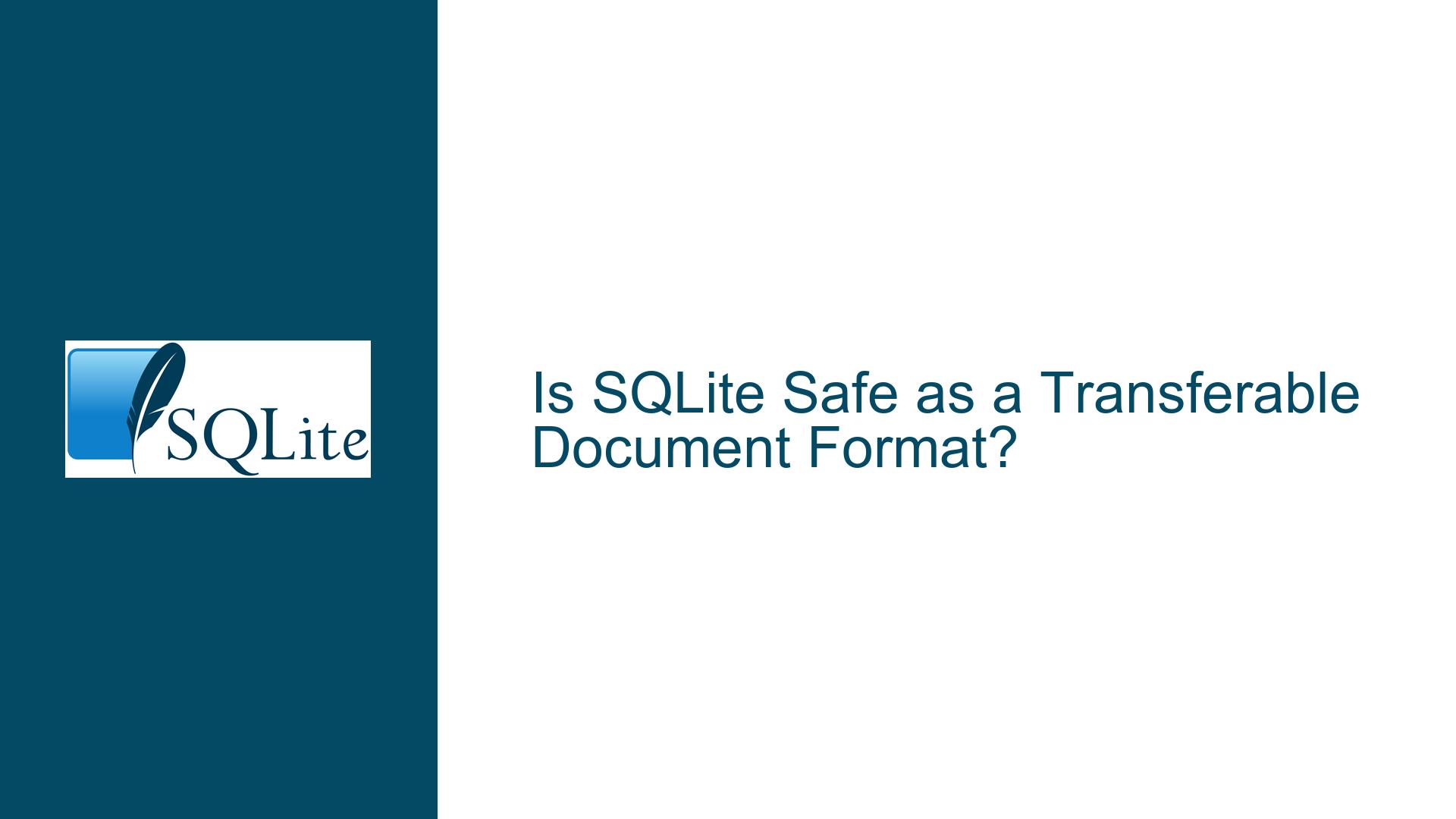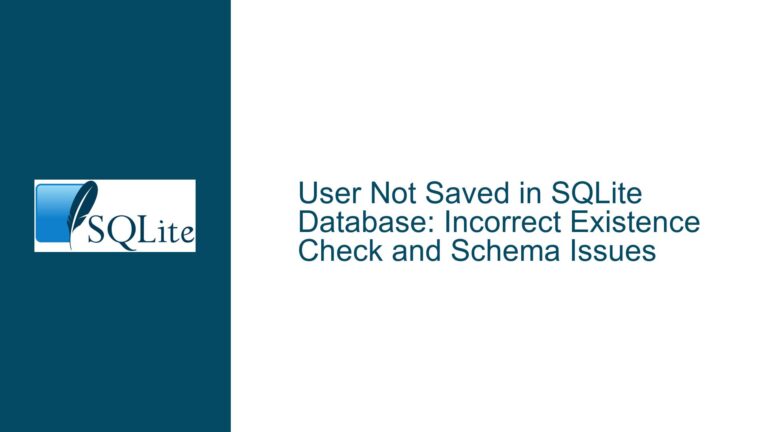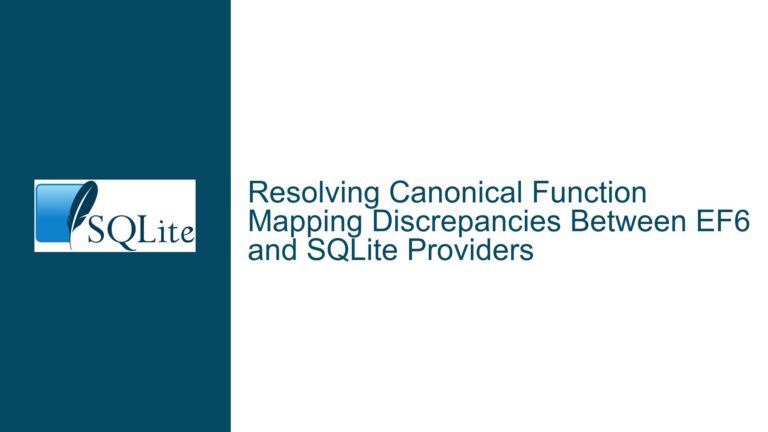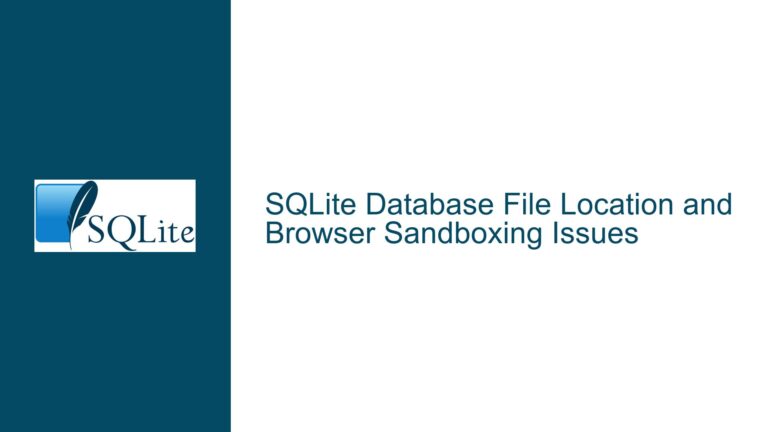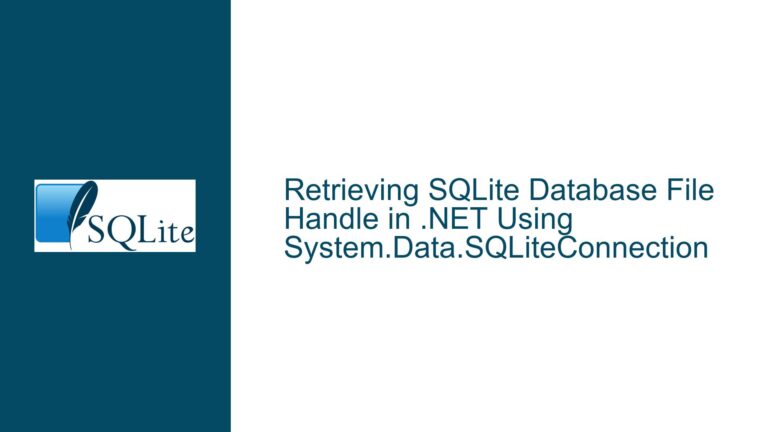Is SQLite Safe as a Transferable Document Format?
SQLite as a Transferable Document Format: Security and Practical Considerations
SQLite is often touted as a versatile and lightweight database engine, suitable for a wide range of applications, including serving as an application file format. However, when considering its use as a transferable document format—particularly for untrusted files—several security and practical concerns arise. This post delves into the nuances of using SQLite in this capacity, exploring the potential risks, underlying causes, and actionable steps to ensure safety and reliability.
Understanding the Security Implications of SQLite as a Document Format
SQLite’s design as a serverless, self-contained database engine makes it an attractive choice for embedding within applications or using as a file format. However, its flexibility introduces potential security risks when handling untrusted files. The primary concern revolves around the execution of arbitrary code through custom SQL functions, virtual tables, or triggers, which could be exploited by malicious actors.
The SQLite documentation emphasizes that the database engine itself is secure, but the safety of using SQLite as a transferable document format depends heavily on how the application interacts with the database. For instance, if an application allows the execution of custom SQL functions or virtual tables with side effects, a maliciously crafted database could trigger unintended behavior. This risk is particularly acute when the database file originates from an untrusted source.
To mitigate these risks, SQLite provides mechanisms to disable certain features that could be exploited. For example, the sqlite3_db_config function can be used to restrict the creation of custom SQL functions or virtual tables. Additionally, the SQLITE_DBCONFIG_ENABLE_LOAD_EXTENSION pragma can disable the loading of extensions, further reducing the attack surface.
However, these safeguards are not enabled by default, and their implementation requires careful consideration by the application developer. Failure to configure these settings appropriately could leave the application vulnerable to attacks. Therefore, understanding the security implications of SQLite’s features is crucial when using it as a transferable document format.
Potential Causes of Security Vulnerabilities in SQLite Document Handling
The security vulnerabilities associated with using SQLite as a transferable document format stem from several factors, including the misuse of SQLite’s extensibility features, improper configuration of security settings, and the handling of concurrent access to database files.
One of the most significant risks arises from the use of custom SQL functions and virtual tables. These features allow developers to extend SQLite’s functionality but can also introduce vulnerabilities if not properly managed. For example, a malicious database file could contain SQL statements that invoke custom functions with side effects, such as modifying files on the host system or exfiltrating data. This risk is exacerbated when the application does not restrict the creation or execution of such functions.
Another potential cause of vulnerabilities is the improper configuration of SQLite’s security settings. By default, SQLite allows the creation of custom functions and the loading of extensions, which can be exploited by attackers. Disabling these features requires explicit action by the application developer, such as setting the SQLITE_DBCONFIG_ENABLE_LOAD_EXTENSION pragma or using the sqlite3_db_config function to restrict certain operations. Failure to implement these safeguards can leave the application exposed to attacks.
Concurrent access to SQLite database files can also introduce security and reliability issues, particularly when the files are stored on network filesystems like NFS. SQLite relies on file locking mechanisms to manage concurrent access, but these mechanisms may not function correctly on certain filesystems or operating systems. For example, file locking on NFS is notoriously unreliable, and Windows systems may experience issues with locking on FAT filesystems or network shares. These limitations can lead to data corruption or unauthorized access if not properly addressed.
Finally, the lack of a comprehensive security model for handling untrusted database files can contribute to vulnerabilities. While SQLite provides tools to mitigate specific risks, such as disabling extensions or custom functions, there is no built-in mechanism for validating the integrity or safety of a database file. This places the burden on the application developer to implement appropriate security measures, such as validating the database schema or sanitizing SQL statements before execution.
Mitigating Risks and Ensuring Safe Usage of SQLite as a Transferable Document Format
To ensure the safe use of SQLite as a transferable document format, developers must adopt a proactive approach to security, focusing on configuration, validation, and concurrency management. The following steps outline best practices for mitigating risks and safeguarding applications that handle untrusted SQLite database files.
First and foremost, developers should disable potentially dangerous features that are not required for their application. This includes restricting the creation of custom SQL functions and virtual tables, as well as disabling the loading of extensions. These measures can be implemented using the sqlite3_db_config function or by setting appropriate pragmas, such as SQLITE_DBCONFIG_ENABLE_LOAD_EXTENSION. By limiting the functionality available to untrusted database files, developers can significantly reduce the attack surface.
In addition to disabling unnecessary features, developers should validate the structure and content of untrusted database files before processing them. This can involve checking the database schema to ensure it conforms to expected patterns, as well as sanitizing SQL statements to prevent injection attacks. For example, applications can use the sqlite3_schema_version function to verify the schema version or employ prepared statements to safely execute SQL queries.
Concurrency management is another critical aspect of using SQLite as a transferable document format. When database files are accessed by multiple processes or stored on network filesystems, developers must implement additional safeguards to prevent data corruption or unauthorized access. This may include using local copies of the database file, implementing application-level locking mechanisms, or leveraging SQLite’s built-in backup API to create secure backups.
Finally, developers should stay informed about SQLite’s security recommendations and best practices. The "Defense Against the Dark Arts" document, referenced in the SQLite documentation, provides valuable guidance on securing SQLite-based applications. By following these recommendations and adopting a defense-in-depth approach, developers can ensure the safe and reliable use of SQLite as a transferable document format.
In conclusion, while SQLite offers many advantages as a lightweight and versatile database engine, its use as a transferable document format requires careful consideration of security and practical concerns. By understanding the risks, addressing potential vulnerabilities, and implementing best practices, developers can leverage SQLite’s strengths while minimizing the potential for exploitation.
